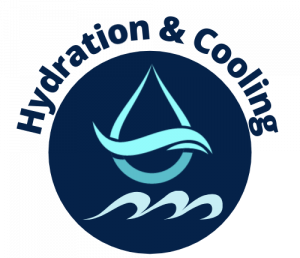Learn how to identify subtle dehydration symptoms in football players before they become dangerous. Discover effective recognition techniques and rapid treatment methods.
_______________________________
Recognizing Dehydration in Football Players: Early Warning Signs and Intervention
The Hidden Danger on the Football Field
When the intensity of football practice meets summer heat, dehydration becomes a serious threat that can sneak up on even the most conditioned athletes. For coaches and athletic trainers, spotting the early warning signs of dehydration isn’t just about performance—it’s about player safety. Football players, with their heavy equipment and high-exertion activities, can lose up to 2 gallons of sweat during intense practices, putting them at particular risk for heat-related illness. Recognizing dehydration symptoms early can prevent dangerous situations from developing and keep your team performing at their best. The challenge? Many initial signs are subtle and easily overlooked in the high-energy environment of practice and games.
Early Warning Signs: What to Watch For
Physical Performance Changes
The first indicators of dehydration often appear in performance metrics that careful observers can detect. Players showing unexplained decreases in speed, strength, or coordination may be experiencing early dehydration. Watch for athletes who suddenly struggle with drills they normally complete with ease, or who appear to tire more quickly than usual. Decision-making abilities may decline as cognitive function becomes impaired—a quarterback making uncharacteristic judgment errors or linemen missing assignments could signal developing dehydration rather than just mental mistakes.
Visual Indicators
Pay close attention to visual cues that players may not notice themselves. Flushed skin that later becomes pale is a progression worth noting. Dark urine color—resembling apple juice rather than lemonade—is a reliable indicator that a player needs more fluids. Decreased sweat production despite continued exertion or dry mouth can signal that the body’s cooling system is compromised. In helmeted sports like football, watch for players whose helmets suddenly seem loose due to decreased facial volume from fluid loss.
Behavioral Red Flags
Changes in player behavior often provide the earliest warning signs of dehydration. Irritability, confusion, or unusual complaints about fatigue deserve immediate attention. Players who become unusually quiet or withdrawn may be experiencing the mental fog that accompanies fluid loss. Athletes who repeatedly visit water stations or ask for breaks when they typically don’t may be instinctively responding to their body’s needs. Trust these behavioral changes as meaningful indicators rather than dismissing them as lack of mental toughness.
Critical Intervention: The First 30 Minutes
Immediate Response Protocol
When you spot potential dehydration, quick action can prevent progression to more serious conditions. Move the player to a cooler area immediately—ideally a shaded space with good airflow or access to your sideline misting fans. Remove unnecessary equipment, especially helmets and pads, to help the body cool naturally. Begin fluid replacement with a sport drink containing electrolytes rather than plain water to address both fluid and mineral losses. The timing of this intervention is crucial—every minute counts when combating progressive dehydration.
Monitoring Recovery
After initial intervention, carefully monitor the player’s recovery. Check heart rate—it should return toward normal within 15 minutes of rest and fluid intake. Mental status should improve quickly; continued confusion requires medical evaluation. Skin should become less flushed and return to a more normal appearance. Body temperature, if you can measure it, should trend downward. Weight measurements before and after practice can quantify fluid loss and guide replacement needs—a loss of just 2% body weight indicates significant dehydration.
Prevention: The Best Treatment Strategy
While recognizing and treating dehydration is essential, preventing it entirely is the goal. Establish regular hydration breaks during practice—not just when players feel thirsty, as thirst is a late indicator of dehydration. Team water stations should be highly visible and easily accessible. Consider using our Team Water Tankers or portable Water Coolers & Stands to ensure clean, cool water is always available in multiple locations around your practice facility. Pre-hydration before practice and games, coupled with consistent fluid intake during activity, creates the foundation for safe performance in hot conditions.
Take Action Now to Protect Your Players
Don’t wait for a heat emergency to improve your team’s hydration strategy. Our high-capacity hydration solutions are designed specifically for the demands of football programs, providing the water access your athletes need when they need it most. Call us today at 828-820-8600 to discuss how our premium, durable hydration equipment can become part of your heat-illness prevention plan. When temperatures rise, having the right equipment isn’t just convenient—it’s essential for player safety.
Ready to upgrade your team’s hydration system?
Contact Hydration & Cooling today for a customized solution that fits your program’s needs and budget. We offer special quotes for tax-exempt organizations.
Call: 828-820-8600 (Monday-Friday, 10am-7pm EST)
FREE SHIPPING to continental US on all orders!
